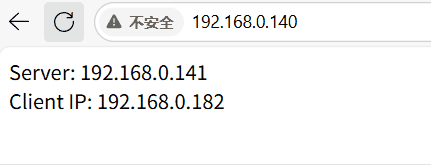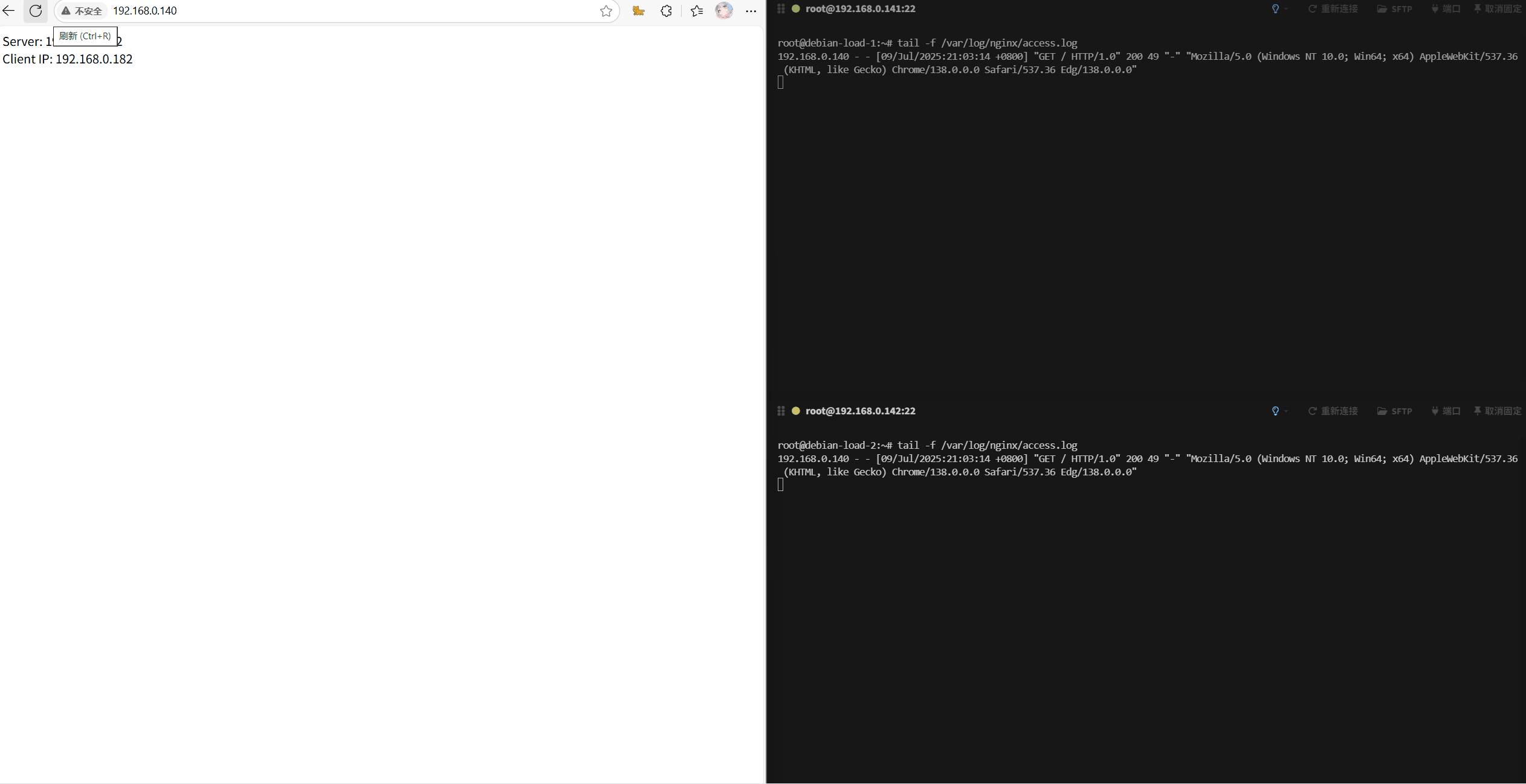Nginx 负载均衡配置
1. 环境准备
假设你有以下环境:
- 负载均衡服务器:运行 Nginx 服务器,写好配置文件。
- 后端服务器:至少两台,运行相同的网站(如 WordPress)监听 80 端口,写好配置文件。
- 每台后端服务器已安装 LEMP 环境,网站文件和数据库一致(生产环境部署的时候,数据库和文件一致更是必须的)。
验证后端服务器:
确保后端服务器的 Nginx 和 PHP-FPM 正常运行:
sudo systemctl status nginx sudo systemctl status php8.2-fpm #改成你自己装的版本 sudo apt install php-fpm -y #如果没装记得装上访问
http://192.168.0.141和http://192.168.0.142,确认网站正常运行。
2. 配置 Nginx 负载均衡
在负载均衡服务器上配置 Nginx,将请求分发到后端服务器。
步骤:
编辑 Nginx 配置文件(如
/etc/nginx/sites-available/default):upstream backend { # 后端服务器列表(根据实际替换) server 192.168.0.141:80; server 192.168.0.142:80; } server { listen 80; server_name 替换为服务器IP; location / { proxy_pass http://backend; proxy_set_header Host $host; proxy_set_header X-Real-IP $remote_addr; proxy_set_header X-Forwarded-For $proxy_add_x_forwarded_for; proxy_set_header X-Forwarded-Proto $scheme; } }后端服务器nginx的配置(两个服务器相同就行)
server { listen 80 default_server; root /var/www/html; # 替换为实际网站路径 index index.php index.html; location ~ \.php$ { include snippets/fastcgi-php.conf; fastcgi_pass unix:/run/php/php8.2-fpm.sock; # 根据PHP版本调整(php -v查看版本,例如8.2.28就取前面的8.2) fastcgi_param SCRIPT_FILENAME $document_root$fastcgi_script_name; include fastcgi_params; } }记得删掉默认配置,避免与
default_server冲突,一般文件位于/etc/nginx/sites-enabled/defaultsudo rm /etc/nginx/sites-enabled/default配置完重启nginx
sudo nginx -t sudo systemctl reload nginx
配置说明:
upstream backend:定义后端服务器池,请求将分发到列出的服务器。proxy_pass http://backend:将请求转发到backend池。proxy_set_header:传递客户端的真实 IP 和请求头,确保后端服务器记录正确信息。测试配置:
sudo nginx -t如果无错误,重载 Nginx:
sudo systemctl reload nginx
3. 负载均衡策略(可选)
Nginx 默认使用 轮询(round-robin) 策略,依次将请求分发到后端服务器。你可以根据需求调整配置文件:
轮询(round-robin) 将客户端的请求依次分发到后端的每台服务器,按顺序循环进行:
upstream backend { server 192.168.0.141:80; server 192.168.0.142:80; }权重(weight): 为性能较强的服务器分配更多请求:
upstream backend { server 192.168.0.141:80 weight=3; server 192.168.0.142:80 weight=1; }192.168.1.101将接收 75% 的请求。最少连接(least_conn): 将请求分发到当前连接数最少的服务器:
upstream backend { least_conn; server 192.168.0.141:80; server 192.168.0.142:80; }IP 哈希(ip_hash): 根据客户端 IP 固定分发到同一服务器,适合需要会话保持的场景:
upstream backend { ip_hash; server 192.168.0.141:80; server 192.168.0.142:80; }
选择策略后,更新配置并重载:
sudo nginx -t
sudo systemctl reload nginx
5. 测试负载均衡
要求:访问 http://负载均衡服务器IP,多次刷新页面,观察请求是否分发到不同后端服务器。
验证客户端 IP 传递: 在后端服务器的每台服务器添加 PHP 文件(如
/var/www/html/index.php)添加:<?php echo "服务器 Server IP: " . $_SERVER['SERVER_ADDR'] . "<br>"; echo "客户端 Client IP: " . $_SERVER['HTTP_X_REAL_IP']; ?>访问
http://负载服务器IP,(不要写成后端服务器的IP)确认显示后端服务器 IP 和客户端真实 IP。
检查每个后端服务器的访问日志:
sudo tail -f /var/log/nginx/access.log在
192.168.0.141和192.168.0.142上运行,确认请求分布。
6. 同步后端服务器
后端服务器的网站文件和数据库需保持同步:
文件同步:使用
rsync:rsync -avz /var/www/html/ user@192.168.0.223:/var/www/html/数据库同步:配置 MySQL 主从复制或使用共享数据库:
mysql -u root -p GRANT REPLICATION SLAVE ON *.* TO 'repl_user'@'192.168.0.223' IDENTIFIED BY 'repl_password';在从服务器上配置同步(具体步骤可另行提供)。